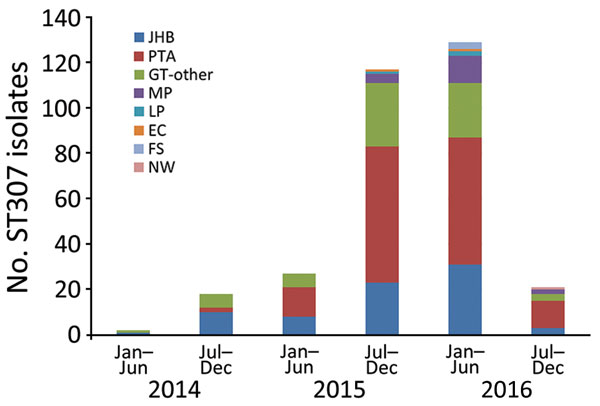Volume 25, Number 4—April 2019
Research
Klebsiella pneumoniae ST307 with blaOXA-181, South Africa, 2014–2016
Figure 1

Figure 1. Locations of Klebsiella pneumoniae with ST307 oxacillinase 48–like in South Africa during January 2014–December 2016, as identified at Ampath Molecular Diagnostic Reference Center (PTA). EC, Eastern Cape Province; FS, Free State Province; GT-other, other cities in Gauteng Province; JHB, Johannesburg, Gauteng Province; LP, Limpopo Province; MP, Mpumalanga Province; NW, North West Province; PTA, Pretoria, Gauteng Province; ST, sequence type.
1These authors contributed equally to this article.
Page created: March 18, 2019
Page updated: March 18, 2019
Page reviewed: March 18, 2019
The conclusions, findings, and opinions expressed by authors contributing to this journal do not necessarily reflect the official position of the U.S. Department of Health and Human Services, the Public Health Service, the Centers for Disease Control and Prevention, or the authors' affiliated institutions. Use of trade names is for identification only and does not imply endorsement by any of the groups named above.